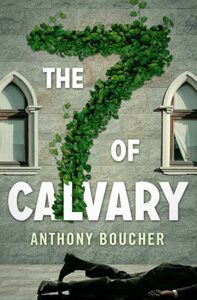Crows Can’t Count by Erle Stanley Gardner writing as A.A. Fair
Review by Matt B. (BuffaloSavage)
Partnerships in detective fiction usually are usually studies in contrasting characters. The head of B. Cool Confidential Investigations is Bertha Cool, a comic miser in the Mr. Krab manner. Her partner is Donald Lam, a shrimpy lawyer who got disbarred because he informed a gangster of a legal trick to get away with a murder. Cool is a hard driver while Lam is more subtle, never telling cops, clients, or Bertha all he knows or suspects. To prospective clients, Cool describes Lam as “a little runt, but he’s brainy.”
Crows Can’t Count (1946) involves trusts, emeralds, a pet crow and savvy city women. The running gag – that every female that crosses Lam’s path falls for him – is honored. The unique point is that Cool and Lam travel to Columbia (as in Bogota, not South Carolina) to investigate the precious stones aspect of the case. Lam adjusts inter-culturally but Cool, of course, is her irritable self, stomping on cultural corns left and right. It’s hilarious.
The dialogue-driven stories have believable and vivid characters. The stories demand thinking. “Among his many other virtues,” wrote Anthony Boucher, long-time reviewer for the NYT, “Erle Stanley Gardner is surely the finest constructor of hyper-intricate puzzles in evidence. Besides the Perry Mason mysteries, Gardner wrote a couple dozen Cool and Lam mysteries under the pen name of A.A. Fair. The titles are often generalizations about animals as in Owls Don’t Blink or Cats Prowl at Night.”








